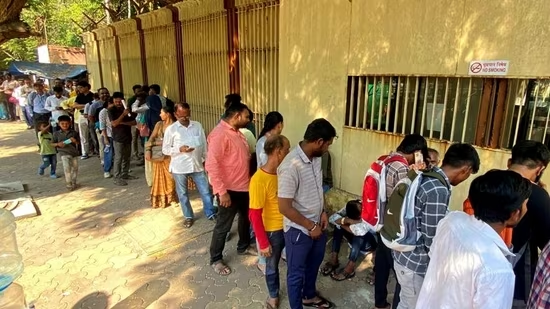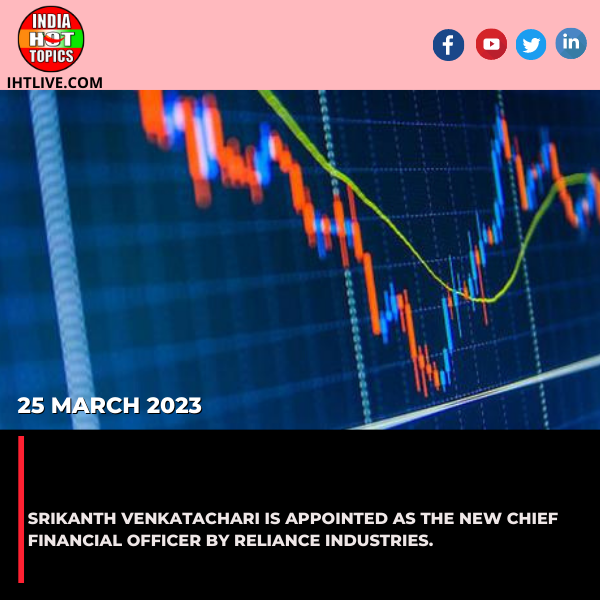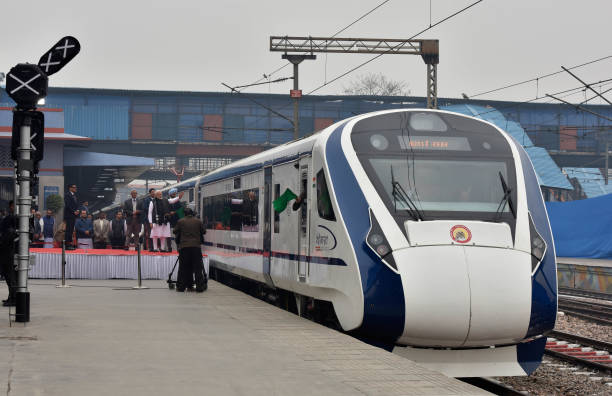Business
World Bank predicts 6.3% GDP growth for India in FY24 as the country’s economy remains resilient in the face of adversity.
.jpg)
India’s economic trajectory has been a topic of global interest, especially in light of the challenges posed by the COVID-19 pandemic. The recent prediction by the World Bank, forecasting a 6.3% GDP growth for India in the fiscal year 2023-24 (FY24), reflects the country’s resilience and its ability to rebound from adversity. Let’s delve into the details of this forecast and the factors contributing to India’s economic recovery.
World Bank’s GDP Growth Prediction:
The World Bank’s forecast of 6.3% GDP growth for India in FY24 is a positive signal for the nation’s economy. This projection indicates a strong recovery and suggests that India is on track to regain its economic momentum after a period of uncertainty and disruption caused by the pandemic.
Factors Driving India’s Economic Resilience:
Several factors contribute to India’s economic resilience and its ability to maintain a positive growth trajectory:
Robust Domestic Demand: India’s large and diverse population, coupled with a growing middle class, ensures a steady demand for goods and services, providing a strong foundation for economic growth.
Economic Reforms: The Indian government has introduced a series of economic reforms aimed at improving the business environment, attracting foreign investment, and boosting domestic manufacturing.
Digital Transformation: The digital revolution in India has accelerated during the pandemic, leading to increased digital adoption in sectors like e-commerce, fintech, and remote work.
Infrastructure Development: Investments in infrastructure, including transportation, logistics, and connectivity, are critical for economic growth and competitiveness.
Resilient Agriculture Sector: Agriculture remains a significant contributor to India’s economy, and initiatives to modernize and enhance the sector have improved rural incomes.
Vaccination Drive: India’s large-scale vaccination campaign has helped contain the spread of COVID-19 and allowed economic activities to resume more fully.
Global Trade: India’s participation in global trade and export-led growth strategies contribute to its economic resilience.
Challenges to Address:
While the economic outlook is positive, India faces several challenges that require attention:
Inclusive Growth: Ensuring that the benefits of economic growth reach all segments of the population, especially marginalized communities, is crucial.
Job Creation: Addressing unemployment and underemployment remains a priority, particularly among the youth.
Sustainable Development: Balancing economic growth with environmental sustainability and addressing climate change challenges is essential.
Infrastructure Gaps: Continued investment in infrastructure is necessary to support economic growth and development.
The World Bank’s prediction of 6.3% GDP growth for India in FY24 is a testament to the country’s resilience and its ability to navigate challenges effectively. India’s diverse economy, coupled with ongoing reforms and investments, positions it well for a robust recovery. As the nation moves forward, addressing the challenges and maintaining a focus on inclusive and sustainable growth will be key to ensuring a prosperous future for all its citizens.
General News Platform – https://ihtlive.com/
Entertainment News Platforms – anyflix.in
Construction Infrastructure and Mining News Platform – https://cimreviews.com/
Podcast Platforms – https://anyfm.i
Business
Vistara cancellations: Amid delays and interruptions, the airline may cancel 60 flights today; the centre requests a report

Vistara has announced the cancellation of several flights due to a shortage of pilots and crew.
The Ministry of Civil Aviation (MoCA) is seeking a detailed report from Vistara regarding flight cancellations and major delays, as the airline has cancelled or delayed over 100 flights in the past week. The number of flights may increase to 70. Vistara attributed the disruptions to a shortage of pilots and announced measures to alleviate the situation, including reducing flight operations and using wide-body aircraft on domestic routes.
What Vistara said on flight delays and disruptions
Vistara has reported numerous flight cancellations and delays due to a shortage of pilots and crew, as stated by a company spokesperson. The company has experienced numerous crew unavailability issues in recent days.
The spokesperson stated that efforts are being made to stabilize the situation and that regular operations will resume soon.
The spokesperson stated that teams are working diligently to minimize customer discomfort.
The airline has deployed larger aircraft, such as the B787-9 Dreamliner and A321neo, on select domestic routes to accommodate more customers. They are offering alternate flight options or refunds to affected customers. They apologize for the inconvenience caused by the disruptions and are working to stabilize the situation. They aim to resume regular capacity soon.
Vistara is utilizing larger aircraft, such as the Boeing 787 Dreamliner, on certain domestic routes to accommodate more passengers as per a spokesperson.
The airline also experienced similar disruptions last month.
The Economic Times reports that first officers of Vistara, unhappy with their new employment contract, have been reporting sick for the past two days, leading to multiple flight delays.
General News Platform – https://ihtlive.com/
Entertainment News Platforms – anyflix.in
Construction Infrastructure and Mining News Platform – https://cimreviews.com/
Podcast Platforms – https://anyfm.in/
Business
Investors valued Swiggy at $10.7 billion in 2022. It is said that the business intends to go public this year.

In the nine months leading up to December 2023, Swiggy lost $200 million, as per a corporate internal document. This occurs as the company, funded by SoftBank, looks to go public on the stock market. Swiggy may begin listing by the end of 2025, according to prior reports.
According to an internal document seen by Reuters, Swiggy lost $500 million during the course of the fiscal year 2022–2023. The report, which cited unidentified sources, asserted that the corporation reduced losses for the entire year 2023–24 thanks to lower wage payouts and spending reductions in marketing.Swiggy’s losses for the first nine months of the fiscal year 2023–2024, from April to December 2023, totaled $207 million. During that time, the company’s sales was $1.02 billion, down from $1.05 billion in the fiscal year 2022–2023.According to an internal document seen by Reuters, Swiggy lost $500 million during the course of the fiscal year 2022–2023. The report, which cited unidentified sources, asserted that the corporation reduced losses for the entire year 2023–24 thanks to lower wage payouts and spending reductions in marketing.
Swiggy’s losses for the first nine months of the fiscal year 2023–2024, from April to December 2023, totaled $207 million. During that time, the company’s sales was $1.02 billion, down from $1.05 billion in the fiscal year 2022–2023.
Investors valued Swiggy at $10.7 billion in 2022. The business began by delivering meals, then it grew to include groceries and reservations for restaurants.
General News Platform – https://ihtlive.com/
Entertainment News Platforms – anyflix.in
Construction Infrastructure and Mining News Platform – https://cimreviews.com/
Podcast Platforms – https://anyfm.in/
Business
Meesho’s $300 million fundraising round: SoftBank’s invitation, Tiger Global wagers, and more
.jpg)
Tiger Global and Peak XV Partners are leading the latest round, with a combined investment of $150 million.
Meesho is set to raise $300 million from Tiger Global and SoftBank, along with existing and other investors like Peak XV Partners and Mars Growth Capital. This is Tiger Global’s first major round in India since Scott Shleifer stepped down in November. This is one of the few large rounds for Meesho in the past 12 months.
Tiger Global and Peak XV Partners are leading a $150 million round in Meesho, with Peak XV and some limited partners expected to contribute $70 million. Tiger Global is a new investor, while Peak XV is an existing backer. Meesho’s current valuation is $3.9 billion, 20% lower than its previous 2021 valuation. SoftBank, an existing investor, is pushing $30 million for the remaining $150 million.
Meesho is relocating its base from Delaware to India, with a significant portion of the new capital being used to pay taxes before its upcoming IPO.
Meesho’s losses decreased from ₹3,251 crore in FY22 to ₹1,675 crore in FY23, while its revenue from operations increased by 77% from ₹3,232 crore in FY22 to ₹5,735 crore in FY23.
General News Platform – https://ihtlive.com/
Entertainment News Platforms – anyflix.in
Construction Infrastructure and Mining News Platform – https://cimreviews.com/
Podcast Platforms – https://anyfm.in
-

 India8 months ago
India8 months agoThe afternoon briefing revealed that 97.26% of the ₹2000 notes were returned, and the Israeli Prime Minister committed to war goals.
-

 Business1 year ago
Business1 year agoSrikanth Venkatachari is appointed as the new chief financial officer by Reliance Industries.
-

 Entertainment1 year ago
Entertainment1 year agoNew Season 8 The Walking Dead trailer flashes forward in time
-

 India1 year ago
India1 year agoPM Modi’s Three-Nation Tour Begins with a Traditional Welcome in Papua New Guinea
-

 Fashion7 years ago
Fashion7 years agoThese ’90s fashion trends are making a comeback in 2017
-

 India Hot Topics12 months ago
India Hot Topics12 months agoCenter ‘busts’ 8 YouTube channels for distributing false information.
-

 Business7 years ago
Business7 years agoThe 9 worst mistakes you can ever make at work
-

 India1 year ago
India1 year ago3 Vande Bharat Trains, An E-way: MP’s Infra, Connectivity Projects on Fast Track ahead of Assembly Polls








